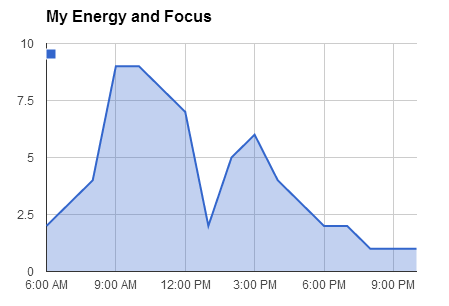Personal productivity is an essential skillset for all leaders and high performing individuals. Without a foundation of disciplined task and commitment management, we won’t make effective use of our most important resource – our time, focus and attention.
High performers recognize there is a rhythm to personal focus and energy, and not every hour in the day is the same. Some people are early risers and are most productive in the mornings, while others are night owls. Some peak mid-morning while others are better later in the day.
Our energy and focus is also subject to the environment. For instance, some people like to start early before distracting co-workers arrive, or move to alternative work locations or meeting rooms to minimize distraction.
And it’s not just other people that distract us. As Ron Friedman described recently in the Harvard Business Review, our email and other technology, as well as our own curiosity and need for immediate gratification are very real mental distractions for us, keeping us from working on our highest priorities.
Plot your productivity
Identifying the peaks and valleys of your day is a good first step to being more proactive in using your time:
- Draw a simple graph with level of energy and focus as the vertical axis (on a scaleof1-10), and the time of day as the horizontal.
- Now draw your perceived level of energy and focus through the day. You should see a curve with peaks and valleys.
- Identify the peaks and ask yourself, “What am I doing most days at those peak times?”.
The answer to item 3 should be, “working on my most important and highest value tasks”. However, for many of us that isn’t the case. We find ourselves in ad-hoc meetings, responding to unimportant emails or being distracted by the urgent (but not important) requests.
It’s about discipline
Armed with insights about your energy biorhythm above, the next step is to consider “booking appointments with yourself” aligned with the peaks in your energy biorhythm. This allows you guard your high productivity times from others, as well as reinforcing your commitment to the task.
Sadly this is an approach that very few individuals use consistently. As David Shrein argues, people assume that the white space in their calendar is the time they will use to execute their high priority tasks, only to be disappointed at the end of the day when the white spaces get hijacked by others or our own distractions.
To support the appointments-with-yourself discipline, execute these three steps every day:
- At the end of each day, plan your next day and look for opportunities to book appointments with yourself for high priority tasks and projects. If the next day has no opportunity, look out further in your schedule.
- Name the task or project to be worked on in your schedule using action verbs like, “complete”, “prepare”, or “analyze”.
- When the time arrives for your appointment-with-yourself, try to remove all distractions like turning off phone/email/text notifications and if possible moving to a less distracting environment.
Our time, focus and energy are perishable resources. They can’t be stored for use later. In the words of Ben Franklin, “Time lost is never found again”.
Do you have the processes and discipline to make the best use of your time, energy and focus?
Article by Tim O’Connor


